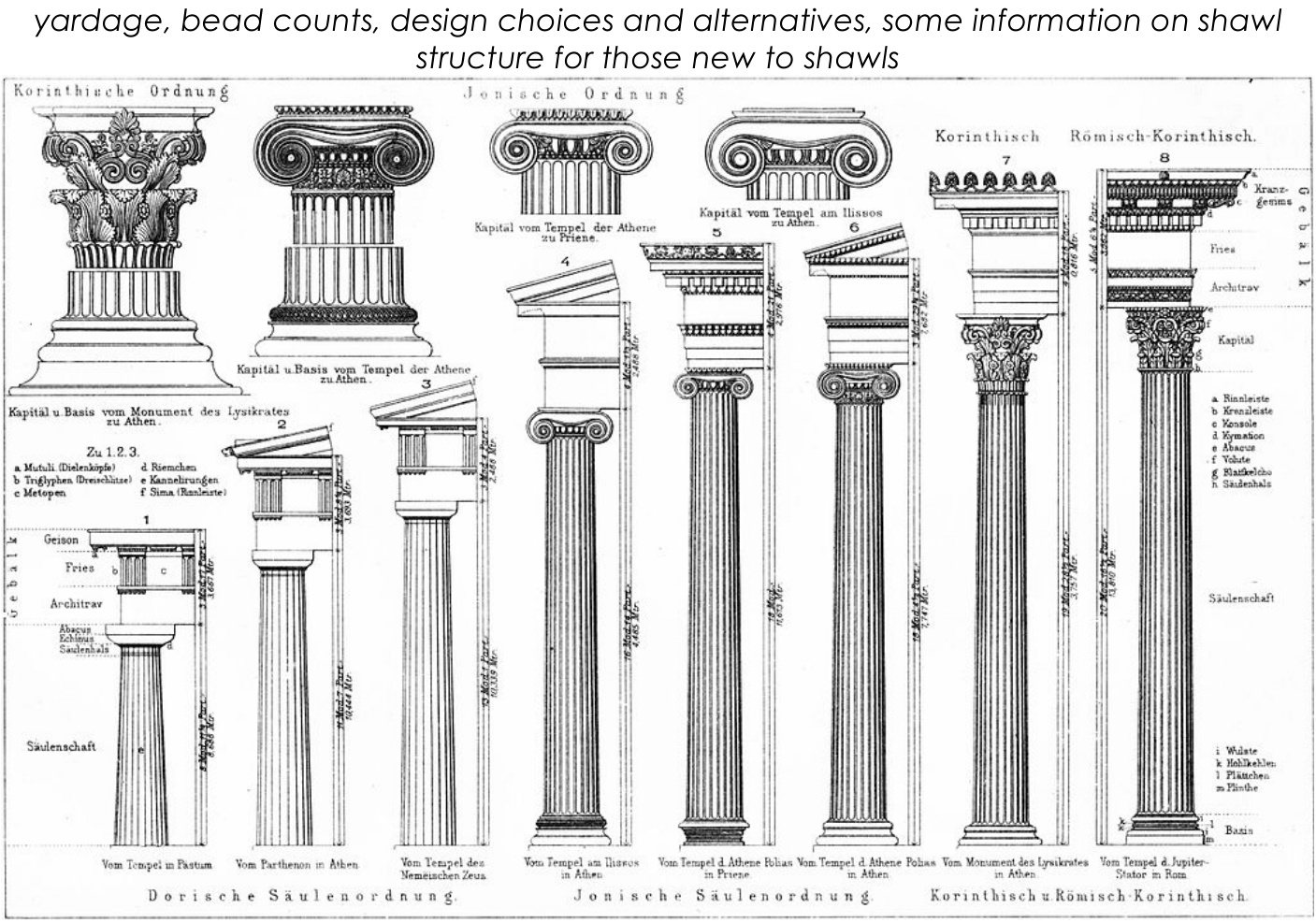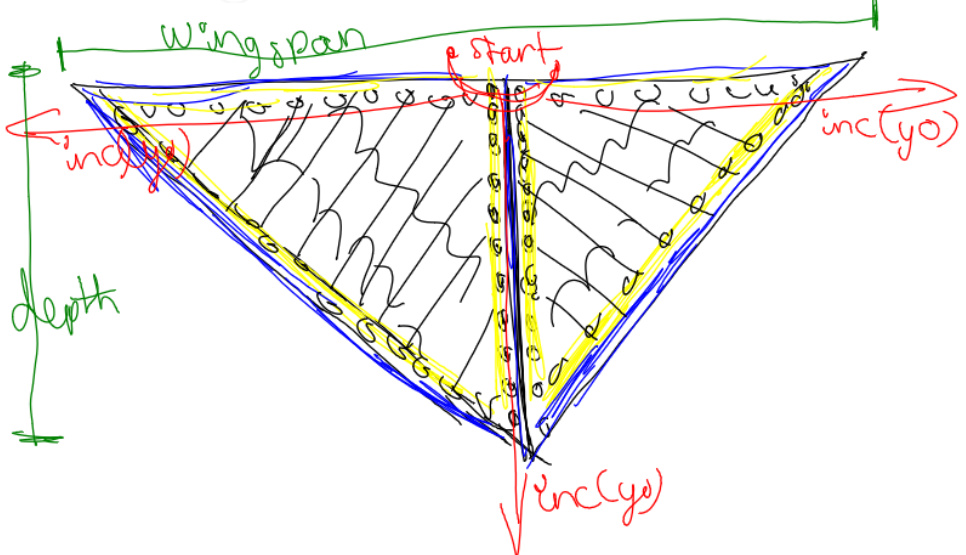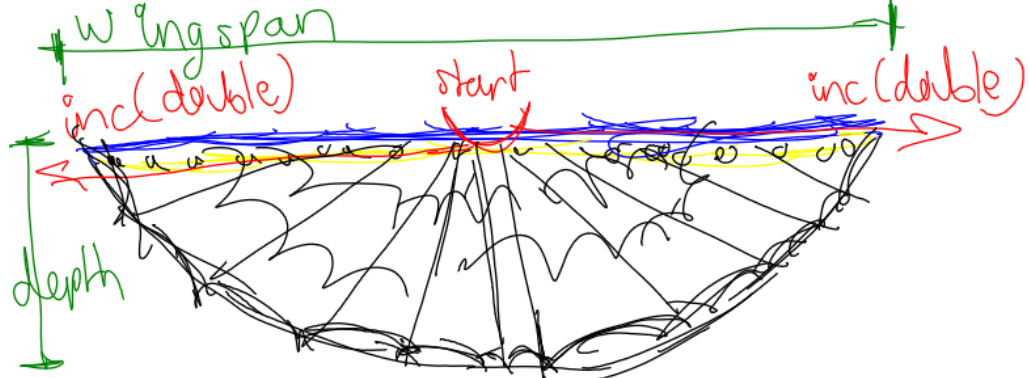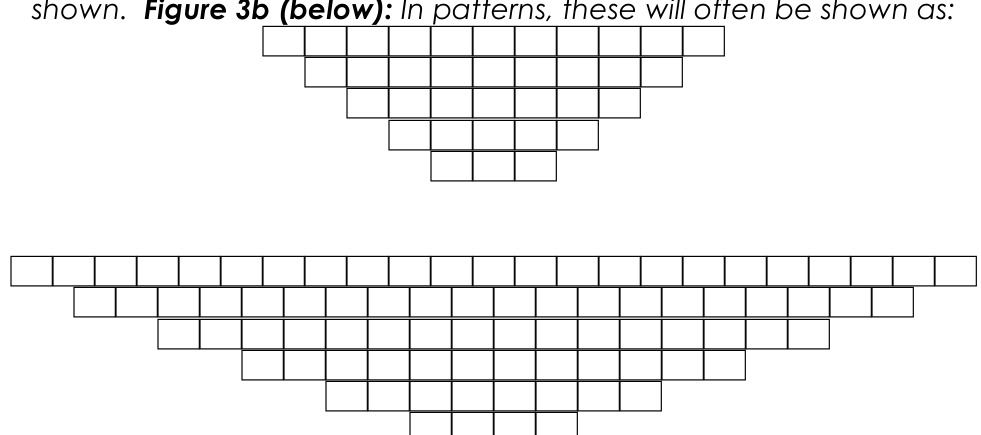Corinthian Order MKAL @DeviousRose
Pattern page: http://www.ravelry.com/patterns/library/corinthian-order/

Release schedule:
present: Prologue (yardage, bead counts, design choices and alternatives, some information on shawl structure for those new to shawls) July 3: Clue 1 (main body, if two colours this is Colour A) July 17: Clue 2 (border transition, if two colours use Colour B here and after) July 31: Clue 3 (border) August 7: We have built the temple columns: post all the spoilers you want! Final pattern release. · Please, NO spoiler photos as your front project photo until after the MKAL is over- use the pattern teaser images or your yarn choices. cm/31.5 in x 24.5 in, but customizable with more or less srepeats of main char
Materials:
- 550-700 yd/458-550 m light fingering weight or fingering yarn. If doing 2-colour, you will need about 450 yards of Colour A and 200 of Colour B. Feel free to use a heavier or light yarn. If doing a scarf, 400 yards will probably do - 4 mm/us 6 circular needles (or size to obtain a lacy, open, flexible fabric) - Beads (if you want!): My design includes the use of 6/0 seed beads, 5 per pattern repeat, but you can substitute with a nupp, purl stitch, or leave it as plain knit stitches. The amount of beads will vary depending on your repeats- for a light fingering weight shawl I used 120 beads. - 2 stitch markers recommended to mark either side of the spine
Customization Options:
Shapes:
一 triangular 一 crescent rectangular (stole or scarf)
Main body:
-stockinette full body lace (chart will be released in Clue 1)
Colours:
- one colour- the splendour of ancient Greece after its heyday - two colour- speculate the colouration the ancient Greeks may have used. Best with the full lace option, so that your Clue 1 pillars are one colour and your border another
Basic shawl crash course:
2
Terminology:
pattern. Charts in this pattern will be Rs (right side) only, and for the triangular charts will be edae/border/selvedae stitches- 2 or 3 aarter stitches worked on the outer edaes of the shawl to Shawls are often written in only or mostly charts. I have written directions in the pattern, but ofmesnawi. garter tab cast-on- creates a smoother edge than casting on the beginning stitches and knitting worked twice on each side of the spine. I will include edge increases, but many patterns do not. charts let you know where your stitches line up in relationship to on another and your overall
Shaping:
Triangular shawls grow via increases at their edges and centers. It has a spine at its center, most often a singe-stitch garter ridge or single-stitch line of stockinette. I have made the shawl spine for this design a two-stich, basic cable instead of a single-stitch ridge.

Figure 1: Structure of a triangular shawl, with colouration following that of Figure 3a. The blue edges indicate the border stitches. Circles indicate yarn overs. Crescent-shaped shawls grow out on either edge by two stitches. This means that depth will build up more slowly than in a triangular shawl, and the slope gives the impression of a crescent. Crescent shawls are sometimes worked bottom-up. Their wingspan is wider than triangular shawls in proportion to their depth, which is shallower when compared.

Figure 2: Structure of a top-down crescent shawl, as this pattern will use. The edge increases are always some form of double increase, so the shawl does not grow out towards the bottom, as a triangularshawl does.
Reading a chart:
Shawls are often written in only or mostly charts. I have written directions in the pattern, but charts let you know where your stitches line up in relationship to on another and your overall pattern. Charts in this pattern will be Rs (right side) only, and for the triangular charts will be worked twice on each side of the spine. I will include edge increases, but many patterns do not.


edge increase- yo on either side of chart rep spine of shawl (center garter stitch—knit every row) nostitch Figure 3a (above): Typical chart (with increases and spine shown) for a triangular shawl, with RS only

Figure 4 (above): Typical chart (increases NOT shown) for a crescent-shaped shawl, RS only. It is worked once, and the shawl increases by 2 stitches on each side.
Blocking a lace shawl:
There is an easy way and a hard way to do this. Lest this portion get too long, that will be elaborated on in the final clue. For now, au revoir until July 3!









